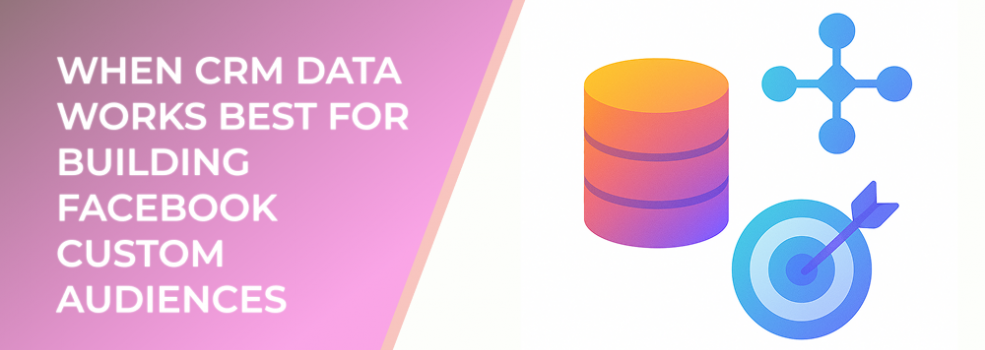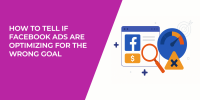Pixel audiences are great for capturing on‑site behavior, but they miss offline sales, phone‑only leads, and long sales cycles. CRM data fills those gaps, letting you target or exclude people based on actual relationship status—lead, MQL, opportunity, customer, repeat buyer—rather than just clicks.
Useful statistics at a glance
-
Match rate benchmarks: Email‑based lists commonly achieve 60–80% match, phone‑enhanced lists 70–90% when country/ZIP are included and fields are clean.
-
Recency effect: Lists updated within 7–14 days tend to deliver 10–25% lower CPA than stale lists (>60 days), as statuses and contacts remain accurate.
-
Suppression power: Excluding recent purchasers and closed‑lost leads from prospecting can cut wasted impressions by 15–30% and reduce CPM creep in broad ad sets.
-
Value signals: Value‑based Custom Audiences (LTV or last 365‑day revenue) often improve ROAS by 10–20% at the same spend by prioritizing high‑propensity segments.
Ranges reflect common patterns observed across performance accounts; impact varies by vertical, AOV, and sales cycle length.
When CRM data works best
1) You need clean exclusions to protect efficiency
Excluding paying customers, recent trial users, active opportunities, or disqualified leads prevents pay‑to‑talk scenarios and protects frequency.
-
Best for: SaaS trials, subscriptions, high‑AOV ecommerce, B2B pipelines.
-
Minimum data: Email (primary), phone (optional), country/ZIP, status field (e.g., Customer, Opportunity, Disqualified).
2) You run long or offline sales cycles
If conversions are logged in your CRM (not the website), pixel audiences under‑represent the best prospects.
-
Best for: B2B, finance, real estate, education, healthcare.
-
Tip: Sync Offline Conversions or upload closed‑won and high‑quality stages to train value‑based lookalikes.
3) You want value‑based targeting
Segment by LTV, order count, or recency/frequency/monetary (RFM) scores.
-
Best for: Ecommerce with repeat purchases; subscription upgrades and win‑backs.
-
Tactic: Create 3 cohorts (Top 10% LTV, Middle 40%, Bottom 50%) and bid more aggressively on the top tier.
4) You need stage‑aware messaging
Map funnel stages directly from CRM (MQL → SQL → Opportunity) and tailor creative by stage.
-
Best for: Lead gen and B2B where education nurtures intent.
-
Output: Separate Custom Audiences per stage; pair with matching offers (demo vs case study vs pricing).
5) You rely on lead scoring
If your CRM assigns scores, build audiences around thresholds (e.g., score ≥70) to prioritize high‑propensity leads.
-
Best for: Teams with rich engagement data (email opens, webinar attendance, product usage).
6) You need geographic or compliance filters
CRM fields (country, region, consent) allow precise, compliant delivery.
-
Best for: Regulated industries and multi‑country brands.
Data quality checklist (maximize match rate and performance)
-
Primary keys: Email and phone. Include country, state/region, city, ZIP for better matching.
-
Formatting: Lowercase emails; E.164 phone; ISO country codes. Remove spaces and special characters.
-
Deduplication: 1 record per person; resolve aliases and bounced emails.
-
Consent: Only include opted‑in contacts; honor suppression flags.
-
Hashing: Use SHA‑256 hashing if preparing files outside Ads Manager; Facebook hashes on upload too.
-
Minimum size: Aim for 1,000+ matched users per audience for stability (upload more to reach this after matching).
Audience recipes that outperform pixel‑only lists
-
Recent buyers (≤90 days) → Used for cross‑sell/upsell; exclude from prospecting.
-
High‑LTV customers (top decile) → Prime seed for lookalikes (2–5%).
-
Churn‑risk subscribers (last login >30 days) → Win‑back with retention offer.
-
Sales‑qualified leads (SQL) → Mid‑funnel education ads tied to objections.
-
Closed‑lost with reason code “timing/budget” → Nurture and revisit after 60–90 days.
-
Event registrants → non‑attendees → Replay or highlight reel with CTA to book.
Cadence: how often to refresh
-
Fast‑moving pipelines (SaaS/lead gen): Daily–weekly syncs keep stages accurate and maintain lower CPA.
-
Ecommerce repeat buyers: Weekly value updates (LTV, order count) keep lookalikes sharp.
-
Slow‑cycle B2B: Bi‑weekly updates are sufficient; ensure opportunities and suppression lists are current.
Privacy and governance
-
Honor consent and regional regulations; exclude contacts without advertising permissions.
-
Maintain a suppression audience for unsubscribes, do‑not‑contact, and data deletion requests.
-
Document data sources, hashing approach, and retention windows.
Implementation blueprint (step by step)
-
Define objectives: exclusions, win‑back, LTV lookalikes, or stage‑based nurture.
-
Select fields: email, phone, first/last name, country, ZIP, value/LTV, stage, last order date.
-
Clean & normalize: standardize formats; dedupe; drop unconsented contacts.
-
Upload or sync: use direct integrations or secure CSV; set scheduled refreshes.
-
Segment clearly: one audience per intent (e.g., SQL – EMEA, Recent Buyers – US).
-
Pair with creative: align ads to stage/recency/value; personalize offers.
-
Measure: track CPA/ROAS and downstream metrics (qualified rate, pipeline value).
-
Evolve: promote winning segments to seeds for lookalikes; retire low‑match cohorts.
Common pitfalls (and fixes)
-
Low match rate (<50%) → Add phone and location fields; fix formatting; expand to alternate emails where allowed.
-
Stale lists → Automate refreshes and use dynamic audiences.
-
Over‑targeting → Keep segments broad enough to deliver (≥1k matched).
-
Double‑counting → Use mutual exclusions across lifecycle stages.
-
Quality drift → Feed offline conversion value back to Ads Manager monthly.
Executive summary
CRM‑powered Custom Audiences shine when you:
-
Need precise exclusions, stage‑aware messaging, or value‑based seeds.
-
Maintain clean, recent data with the right identifiers and consent.
-
Refresh audiences on a sensible cadence and measure downstream outcomes, not just clicks.

